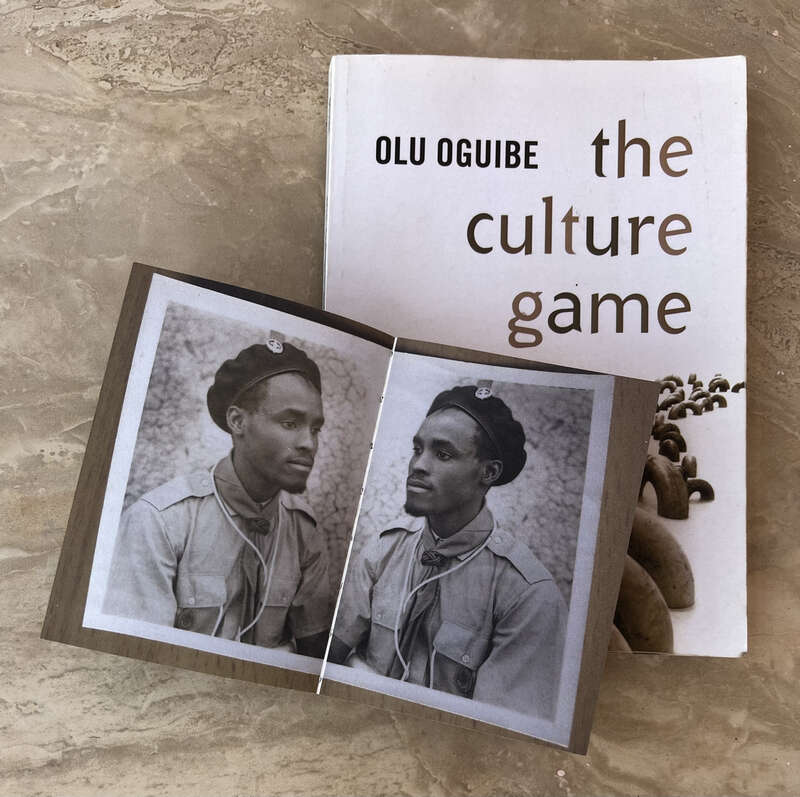
Olu Oguibe’s The Culture Game, with a spread in the foreground from the book All the Tricks (2015), which I made with Ugandan photographer Elly Rwakoma (1938–2021) about his life and practice as a photographer. The spread shows a ‘twin’ selfie made by him.
At least once a year, I return to ‘Photography and the Substance of the Image’, an essay by Nigerian-born, US-based artist and author Olu Oguibe. He successfully argues that the master narrative of photography is ‘rather essentialist and fundamentally flawed’ because it has largely been conceptualized from Western positions. He takes me on a tour through historiography and discourses of photography while centralizing African concerns and perspectives.
The text becomes exciting, time and again, when Oguibe states that this ‘fundamental flaw’ is rooted in ‘the myth of automatism’ already present in the word photography. Its etymology suggests that the pictures resulting from photography are characterized by being ‘written with light’. If light is what is producing the photograph, with a camera as its aid, then what is pictured can easily be taken to be objective. It is relevant to consider this myth of automation not only because of the existence of realities other than those of ‘the West’. Since this essay was first published in 1996, the emergence of digital photography led to a sheer endless stream of arguments pronouncing the death of the medium. Discussions about the danger of AI-generated content tend to be even more defeatist in their verdict on photography. These, too, usually essentialize photography from the same vantage point that Oguibe questions.
The alternative provided is the power to evoke presence, not unique to photographs but made available in a particular way thanks to photography. One of the examples Oguibe gives concerns the cultural treatment of twins. The example is from Nigeria but also resonates in the context of Uganda, where I have been researching photographs for fifteen years.
Oguibe helps me to think of photographs as a particular type of image – produced using a camera and a light-sensitive surface – among representational images made in any other thinkable way, with a substance that is found in their use within particular yet interlinked cultural matrices.
‘Photography and the Substance of the Image’ was published subsequently in:
- In/Sight: African Photographers, 1940 to the Present, edited by Okwui Enwezor (Guggenheim Foundation, 1996), 231–249.
- The Visual Culture Reader, 2nd ed., edited by Nicholas Mirzoeff (Routledge, 2002), 565–583.
- Olu Oguibe, The Culture Game (University of Minnesota Press, 2004), 73–89.
Note to the reader. This article is part of Trigger’s 2023 ‘Summer Read’ series. We invited writers, researchers, photographers and curators to share what is currently occupying their mind through one publication they have been (re)reading during summer. What matters to them is now being recast as a challenge for today. Highly personal entries to a diversity of publications (photobooks, studies, monography, essay, historical research) lead us – readers of these readers – to reorient our gaze on (the history of) images and photography.
